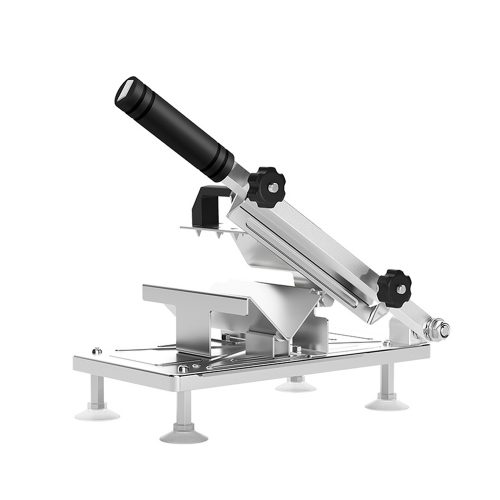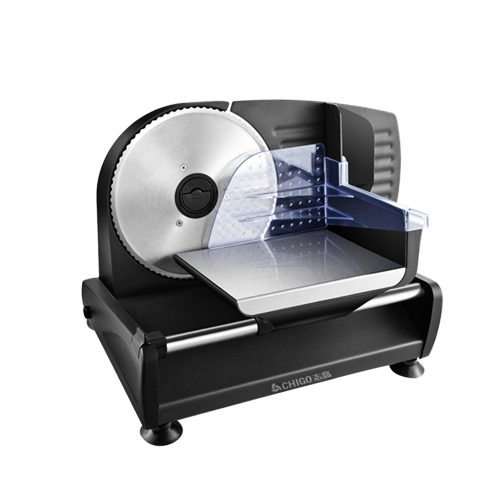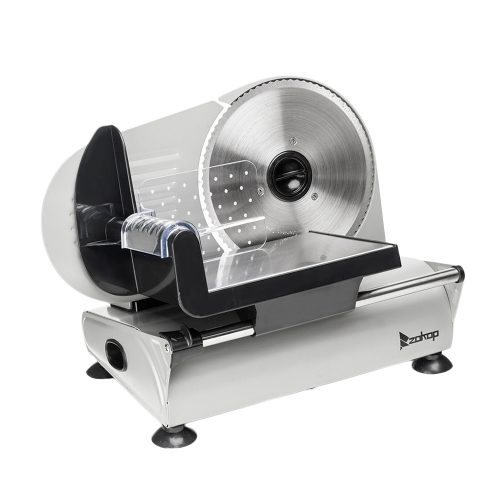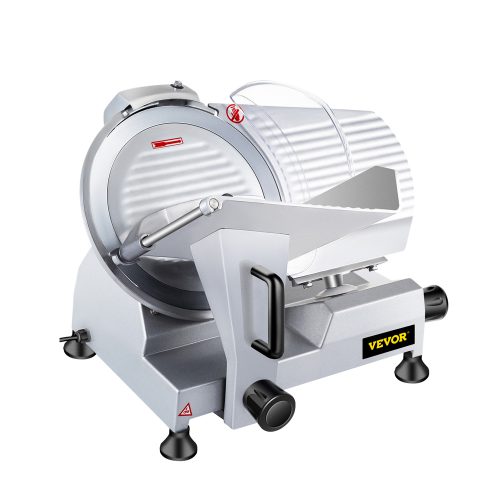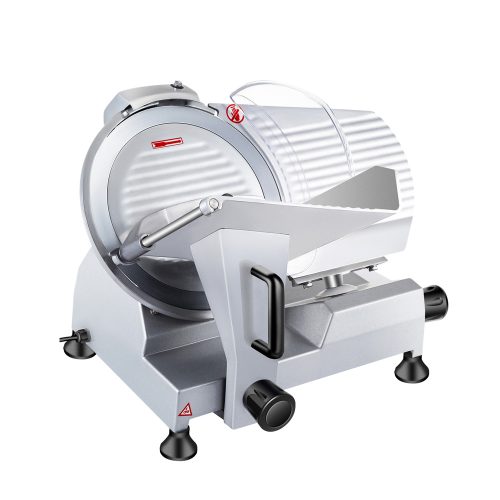BEST MEAT SLICER COLLECTION FOR YOU
Hobart
Borlebbi
Berkel
Generic
Weston
HOUSNAT
LEM
Gourmia
Rival
SuperHandy
BESWOOD
Berkel
Cuisinart
VBENLEM
NVTED
Globe
Kitchener
OSTBA
Moongiantgo
Nesco
AnEssOil
Kitchenware Station
Cabela's
KitchenAid
Univex
KRUPS
- Step 1: Place the meat in the slicer
Close it. You should hold the meat or cheese securely in place.
In addition, you can put a piece of wax paper on the machine to keep the slices in perfect shape.
- Step 2: Adjust the thickness of your slices
- Step 3: Turn on the deli slicer
- Step 4: Make a quick slicing motion
For a manual slicer, you simply drop the blade onto the meat and lift it back up.
- Step 5: Turn off the deli slicer
- Step 6: Clean your deli slicer
- Motor
1/4-1/3 hp: less than one hour of work per day/thinner meat
1/3-1/2 hp: a few hours of work per day
1/2 hp or more: daily use/all-day work
The lower horsepower models are the most cost-effective if you don't use them often.
- Meat Slicer Blade Size
Entry-level blades: 7 to 10 inches
More powerful blades: 12 inches to 14 inches
Commercial meat slicer blades: around 12 inches
- Safety
- Ease of use
You also have to consider if it has cleaning legs for easier cleaning.
- Light cleaning
1. Unplug it.
2. Set the machine blade to zero.
3. Wipe off debris with a cloth.
4. Take a cloth, detergent and hot water and wipe down the slide, food chute, product pusher, blade and product collector, and other small nooks and crannies. Do not use abrasive sponges or steel wool.
5. Rinse the machine with a clean towel and hot water and let it air dry.
- Deep Cleaning
1. Unplug it.
2. Set the machine blade to zero.
3. Wipe off particles with a cloth.
4. Disassemble the food slicer.
5. Take the parts to a sink with hot water and detergent.
6. If the disassembly tool is not included, read the user manual.
7. Wash all parts with hot water and soap.
8. Rinse the parts and use sanitizing spray.
9. Let them air dry.
10. Reassemble the food slicer.
11. Cover the food slicer and ensure it is clean the next time you use it.
- Tips
2. Use cut-resistant gloves when removing the blades.
3. Use food handling gloves to prevent the growth of germs.
- Step 1: Clean the blades
- Step 2: Meat Slicer Blade Sharpener
Rotate the attachment 180 degrees until it is positioned to make contact with the sharpening stone and blade.
Once the knife sharpener is in place, lock the knob back in place.
- Step 3: Start sharpening the knife
Once on, allow the blade to rotate for 30 seconds.
Stop spinning for 4 seconds, and then spin for another 30 seconds.
Remember to only stop for a maximum of 4 seconds, or the blade will be damaged.
- Step 4: Cleaning
Add lubricant to prevent rusting.
Put the sharpening stone back to the starting position.
Put the blade cover back on.
Automatic meat slicer: 0.5 mm to 25 mm
Flywheel type slicer: less than or equal to 4 mm
Commercial food slicers: paper-thin - 98 inch

